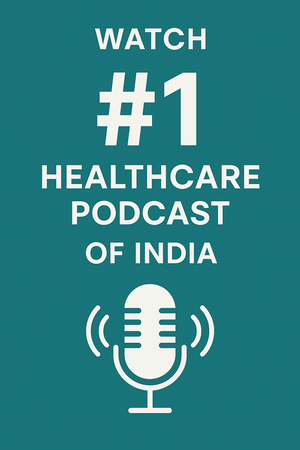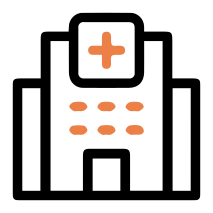Down Syndrome: Causes, Symptoms, and Treatment
Down Syndrome is a genetic condition that affects millions of people worldwide. Characterized by an extra copy of chromosome 21, it leads to a variety of physical and developmental challenges. Understanding the causes, symptoms, and treatment options for Down Syndrome is crucial for providing effective support and enhancing the quality of life for those affected.
Causes of Down Syndrome
Down Syndrome is caused by the presence of an extra chromosome 21 in the cells of the body. This chromosomal anomaly occurs due to a process called nondisjunction, which results in the incorrect division of chromosomes during the formation of reproductive cells (eggs or sperm). When these cells combine during fertilization, the embryo ends up with three copies of chromosome 21 instead of the usual two.
1. Nondisjunction
Nondisjunction is the primary cause of Down Syndrome. During cell division, chromosomes are supposed to separate into different cells. In nondisjunction, the chromosomes fail to separate properly, leading to an extra chromosome in one of the resulting cells. When this cell participates in fertilization, the resulting embryo has three copies of chromosome 21. This extra genetic material disrupts normal development and results in the features associated with Down Syndrome.
2. Translocation
In a smaller percentage of cases, Down Syndrome is caused by a chromosomal rearrangement known as translocation. This occurs when a part of chromosome 21 breaks off and attaches to another chromosome, usually chromosome 14. Although the total number of chromosomes remains the same, the extra genetic material from chromosome 21 causes the features of Down Syndrome. Translocation can be inherited from a parent who is a carrier of the translocated chromosome, even if they do not have Down Syndrome themselves.
3. Mosaicism
Mosaicism is a less common form of Down Syndrome. It occurs when only some of the cells in the body have an extra copy of chromosome 21. The severity of the symptoms can vary depending on the proportion of cells affected. Individuals with mosaic Down Syndrome may have fewer features of the condition compared to those with the standard form of Down Syndrome. This variation is due to the presence of a mix of normal and abnormal cells.
4. Age and Genetics
While Down Syndrome can occur in any pregnancy, the likelihood increases with maternal age. Women who are 35 years or older have a higher risk of having a baby with Down Syndrome. This increased risk is thought to be related to the aging process of a woman’s eggs, which may lead to errors in chromosome separation. Genetics also play a role; having a family history of Down Syndrome or being a carrier of a chromosomal translocation increases the likelihood of the condition.
Symptoms of Down Syndrome
Down Syndrome presents with a range of physical and developmental symptoms. The severity and range of symptoms can vary significantly from person to person. Common symptoms include:
1. Physical Characteristics
Individuals with Down Syndrome often exhibit distinctive physical features. These may include a flat facial profile, a slanted appearance of the eyes, and a short neck. Other common physical traits include a single transverse palmar crease (simian line), small ears, and a protruding tongue. The muscle tone is often reduced (hypotonia), which can affect movement and coordination.
2. Developmental Delays
Developmental delays are a hallmark of Down Syndrome. Children with Down Syndrome often reach developmental milestones, such as sitting, crawling, and walking, later than their peers. Speech and language development may also be delayed, requiring additional support and therapy to help with communication skills.
3. Cognitive Impairment
Cognitive impairment varies in severity among individuals with Down Syndrome. Most people with Down Syndrome have mild to moderate intellectual disability, which affects their learning abilities and problem-solving skills. Early intervention and specialized education can help individuals maximize their potential and improve cognitive function.
4. Health Issues
Individuals with Down Syndrome are at an increased risk of certain health conditions. Common health issues include congenital heart defects, respiratory problems, hearing loss, and vision problems. Thyroid dysfunction and gastrointestinal issues may also occur. Regular medical check-ups and screenings are essential for managing these health concerns and ensuring overall well-being.
5. Social and Emotional Development
Social and emotional development can be affected by Down Syndrome. Children and adults with Down Syndrome may experience difficulties with social interactions and emotional regulation. Supportive environments, social skills training, and therapy can help improve social and emotional development and enhance quality of life.
Treatment and Management of Down Syndrome
There is no cure for Down Syndrome, but various treatments and interventions can help manage the symptoms and improve quality of life. A multidisciplinary approach involving healthcare providers, therapists, educators, and families is essential for effective management.
1. Early Intervention
Early intervention is critical for individuals with Down Syndrome. Starting therapies and educational interventions at a young age can significantly improve developmental outcomes. Early intervention services may include physical therapy, occupational therapy, and speech therapy. These therapies help address developmental delays, improve motor skills, and enhance communication abilities.
2. Medical Care
Regular medical care is crucial for managing health issues associated with Down Syndrome. Pediatricians and specialists monitor and address any congenital conditions, such as heart defects, hearing loss, and vision problems. Routine screenings, vaccinations, and health check-ups are essential for maintaining overall health and preventing complications.
3. Educational Support
Educational support is vital for maximizing the potential of individuals with Down Syndrome. Special education programs and individualized education plans (IEPs) are designed to address specific learning needs and provide tailored instruction. Inclusion in mainstream classrooms with appropriate accommodations can also be beneficial, promoting social interaction and academic achievement.
4. Speech and Language Therapy
Speech and language therapy plays a key role in addressing communication difficulties associated with Down Syndrome. Therapists work with individuals to develop language skills, improve speech clarity, and enhance overall communication abilities. Early intervention in speech therapy can help children with Down Syndrome develop effective communication skills and reduce frustration.
5. Occupational and Physical Therapy
Occupational and physical therapy are important for addressing motor skills and daily living activities. Occupational therapy focuses on helping individuals develop skills for self-care, fine motor skills, and coordination. Physical therapy aims to improve gross motor skills, strength, and balance. These therapies support independence and functional abilities in daily life.
6. Family Support and Counseling
Family support and counseling are essential for managing the challenges associated with Down Syndrome. Support groups, counseling services, and educational resources can help families navigate the emotional and practical aspects of living with Down Syndrome. Connecting with other families and accessing community resources can provide valuable support and information.
7. Behavioral and Social Skills Training
Behavioral and social skills training can help individuals with Down Syndrome improve social interactions and manage behavior. Programs designed to teach social skills, problem-solving, and emotional regulation can enhance social integration and overall well-being. Positive reinforcement and structured environments support the development of appropriate behaviors and social skills.
8. Transition Planning
Transition planning is important for preparing individuals with Down Syndrome for adulthood. This includes planning for future educational opportunities, vocational training, and independent living skills. Support in transitioning to adult services, employment opportunities, and community involvement can help individuals with Down Syndrome lead fulfilling and productive lives.
Living with Down Syndrome
Living with Down Syndrome involves addressing a range of physical, developmental, and emotional needs. Embracing a positive outlook and providing supportive environments can enhance the quality of life for individuals with Down Syndrome and their families. Key aspects of living with Down Syndrome include:
1. Promoting Independence
Encouraging independence is important for individuals with Down Syndrome. Providing opportunities for self-care, decision-making, and participation in daily activities fosters confidence and autonomy. Supportive environments that promote independence can lead to greater self-sufficiency and improved quality of life.
2. Encouraging Social Integration
Social integration is a key factor in the well-being of individuals with Down Syndrome. Engaging in community activities, participating in social events, and building relationships with peers can enhance social skills and emotional health. Inclusion in community programs and social networks promotes a sense of belonging and acceptance.
3. Accessing Resources and Support
Accessing resources and support services is crucial for managing Down Syndrome effectively. Families and individuals should seek information on available services, including medical care, educational support, and community programs. Support groups and advocacy organizations can provide valuable resources, information, and connections to services.
4. Celebrating Achievements
Celebrating achievements and milestones, no matter how small, is important for individuals with Down Syndrome and their families. Recognizing and celebrating successes fosters a positive environment and encourages continued growth and development. Celebrating achievements also reinforces self-esteem and motivation.
FAQs
What is Down Syndrome?
Down Syndrome is a genetic disorder caused by the presence of an extra copy of chromosome 21. This extra chromosome leads to developmental and physical features such as a flat facial profile, slanted eyes, and developmental delays. Down Syndrome can vary in severity, but it is typically associated with mild to moderate intellectual disability and an increased risk of certain health conditions. Early intervention and appropriate support can improve quality of life and developmental outcomes for individuals with Down Syndrome.
What causes Down Syndrome?
Down Syndrome is primarily caused by an extra copy of chromosome 21, which results from a process called nondisjunction during cell division. Nondisjunction leads to the formation of reproductive cells with an abnormal number of chromosomes. When these cells combine during fertilization, the embryo ends up with three copies of chromosome 21. Other causes of Down Syndrome include translocation, where a part of chromosome 21 attaches to another chromosome, and mosaicism, where only some cells have the extra chromosome.
How is Down Syndrome diagnosed?
Down Syndrome can be diagnosed through a combination of prenatal screening tests and diagnostic procedures. Prenatal screening tests, such as blood tests and ultrasounds, assess the risk of Down Syndrome during pregnancy. Diagnostic tests, such as chorionic villus sampling (CVS) or amniocentesis, provide a definitive diagnosis by analyzing the baby’s chromosomes. After birth, Down Syndrome
can be diagnosed through a physical examination and genetic testing to confirm the presence of the extra chromosome 21.
What are the common symptoms of Down Syndrome?
Common symptoms of Down Syndrome include physical features such as a flat facial profile, slanted eyes, and a single transverse palmar crease. Individuals with Down Syndrome may also experience developmental delays, including delayed motor skills, speech, and cognitive development. Other symptoms may include reduced muscle tone (hypotonia), hearing and vision problems, and an increased risk of certain health conditions such as heart defects and thyroid dysfunction.
What treatments are available for Down Syndrome?
There is no cure for Down Syndrome, but various treatments and interventions can help manage symptoms and improve quality of life. Treatment options include early intervention therapies such as physical therapy, occupational therapy, and speech therapy to address developmental delays. Medical care is essential for managing health issues, including congenital conditions and routine screenings. Educational support, including special education programs and individualized education plans (IEPs), helps address learning needs. Behavioral and social skills training, as well as family support and counseling, are also important for overall well-being.
Can Down Syndrome be prevented?
Down Syndrome cannot be prevented, as it is a genetic condition caused by the presence of an extra chromosome 21. However, certain prenatal screening and diagnostic tests can assess the risk of Down Syndrome during pregnancy. For women who are at higher risk due to age or family history, these tests provide valuable information and help with early diagnosis and management. While Down Syndrome cannot be prevented, early intervention and appropriate support can significantly improve outcomes and quality of life for individuals with the condition.
What is the life expectancy for individuals with Down Syndrome?
The life expectancy for individuals with Down Syndrome has increased significantly over the years due to advancements in medical care and support. With appropriate medical care and early intervention, many individuals with Down Syndrome live into their 60s and beyond. While they may face certain health challenges and require ongoing support, improvements in healthcare and quality of life have contributed to a longer and healthier lifespan for individuals with Down Syndrome.
How does Down Syndrome affect cognitive development?
Down Syndrome affects cognitive development to varying degrees, with most individuals experiencing mild to moderate intellectual disability. Cognitive challenges may include difficulties with learning, problem-solving, and memory. However, individuals with Down Syndrome can make significant progress with early intervention, specialized education, and supportive environments. Cognitive development varies among individuals, and personalized educational and therapeutic approaches can help enhance learning and functional abilities.
What role do family and support networks play in managing Down Syndrome?
Family and support networks play a crucial role in managing Down Syndrome by providing emotional support, practical assistance, and advocacy. Families are often the primary caregivers and play a key role in accessing medical care, educational support, and community resources. Support networks, including support groups, advocacy organizations, and community services, offer valuable information, resources, and connections to services. Family involvement and a strong support system contribute to the overall well-being and development of individuals with Down Syndrome.
What are some common misconceptions about Down Syndrome?
Common misconceptions about Down Syndrome include the belief that individuals with the condition have severe intellectual disability or limited potential. In reality, individuals with Down Syndrome have a wide range of abilities and can achieve significant milestones with appropriate support and intervention. Another misconception is that all individuals with Down Syndrome have the same physical features or health issues; in fact, symptoms and characteristics can vary widely. Educating the public and promoting awareness can help dispel myths and foster a more accurate understanding of Down Syndrome.






 and then
and then